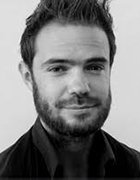
hankimage9 - Fotolia
Greenwave Systems helps power island's smart energy project
With partnerships and IoT technologies, a Danish island's energy provider will implement a flexible green energy grid that better utilizes renewable resources.
What's a key move for an island aiming to be a 100% carbon-free society by 2024? Maximize green energy. To do that, residents of Denmark's Bornholm Island are participating in a smart energy project that uses IoT technology to create a flexible power grid.
Thanks to the EcoGrid project, the Danish island of Bornholm, which already derives 56% of its energy from renewable sources, has become a model for how to develop a Smart grid on a small scale. The island's energy provider, Bornholms Energi & Forsyning, teamed up with a handful of partners on the EcoGrid testbed, which aims to demonstrate how to build a market for flexible electricity consumption, along with more intelligent ways of making use of renewable energy at the time that it's available, explained Kim Kock-Hansen, project manager at Bornholms Energi & Forsyning.
While Danish power companies have enjoyed successes generating alternative energy from wind and solar resources, that energy isn't always available throughout the day due to shifting weather conditions. And storing that renewable energy, as well as importing and exporting it to meet customer demands, isn't optimal due to high transmission costs, Kock-Hansen said. This challenge set the stage for the first EcoGrid smart energy project in early 2011, which outfitted 2,000 homes on Bornholm with IoT technology, including Greenwave Systems' Axon Platform for IoT, which is used to manage and monitor household energy consumption in real time. "We were trying to be smarter about how to use green energy when it's produced to heat people's homes," Kock-Hansen said.
During the first stage of the EcoGrid smart energy project, Bornholms Energi & Forsyning outfitted participating island homes with a smart meter and IoT-based home energy management system -- Greenwave's Axon platform for those homes with heat pumps, and a Siemens system for those using heat panels. In this leg of the project, conducted during the winter heating season, individual homeowners controlled the energy usage in their homes, directed by text messages sent by the energy provider to alert them when green power was cheap. "We might say, 'Do your laundry tonight when the power is cheap,' or, 'Cook dinner later in the evening when there is more alternative energy in the grid,'" Kock-Hansen explained.
While there was initial enthusiasm for the project, this quickly waned as manual interventions grew tiresome and the financial savings didn't add up to much motivation for homeowners. "They were willing to be flexible for a few weeks and then they lost interest," Kock-Hansen said, adding, "We realized that if we could control the houses automatically, that would add a lot of flexibility to the energy system."
In the next stage of the smart energy project, EcoGrid 2.0, which launched in 2015, the team added automation and control. With this latest effort, Bornholms Energi & Forsyning and its partners moved away from individual control of a single home to using an aggregator -- in this case, IBM -- to control thousands of households simultaneously to maximize flexibility.
"When there's a lot of renewable energy in the network, the prices fall, and when there's a lack of energy in the grid, prices rise," Kock-Hansen explained, adding that the company would monitor the network and predict energy surpluses, and then the aggregator would adjust heat usage accordingly.
The Greenwave Axon Platform for IoT's support for open standards, such as Zigbee, was an added benefit because it leaves the door open to control other devices like smart meters on the same platform, Kock-Hansen said. On the flip side, the Greenwave system has no local edge intelligence and, thus, requires an internet connection to the cloud to perform monitoring and analysis, which can sometimes be problematic.
While the team plans to collect specific metrics this upcoming heating season, it has experienced higher participation this time around. Seventy percent of Bornholms Energi & Forsyning customers said they felt positive about the smart energy project, and since implementation, the island's share of renewable energy went up 8.6% compared to the reference group. The project will continue until 2019.
Kock-Hansen said, "We're hoping to boost the share of renewable energy consumed by automating more households and growing the pilot to a larger scale."







